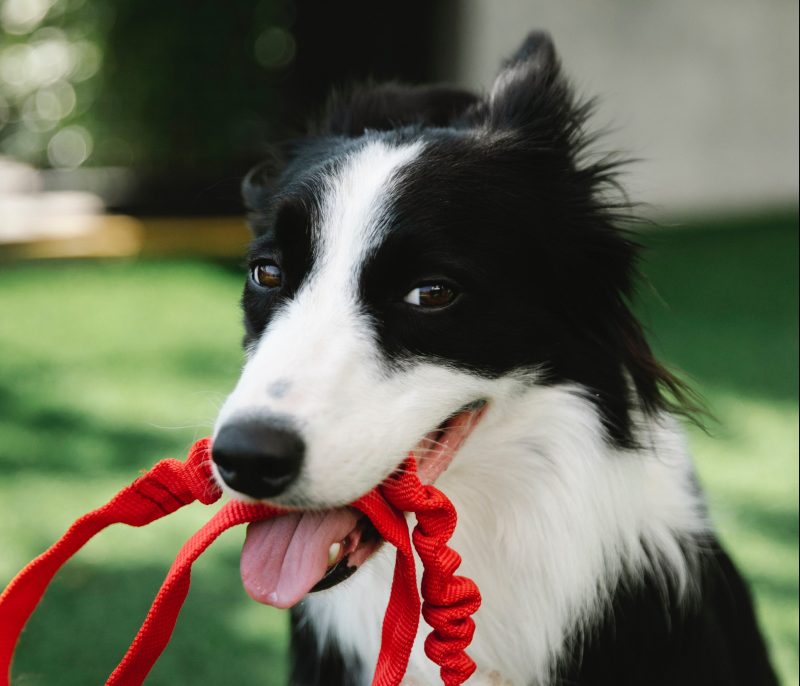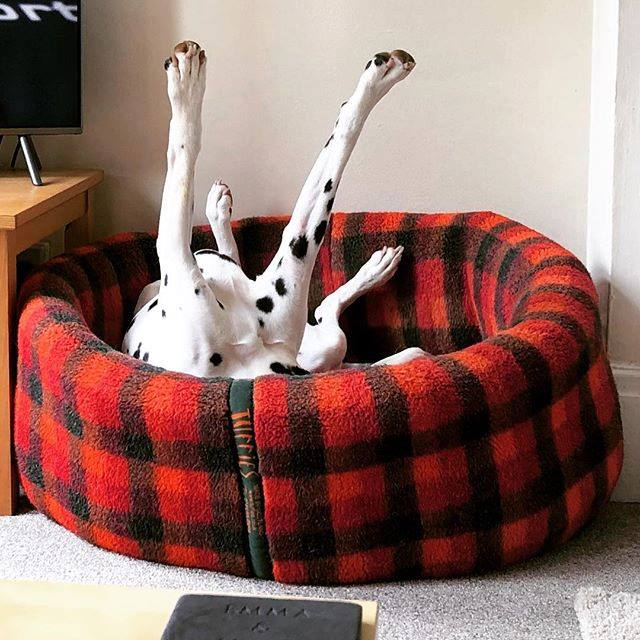Creating a Calm Environment for your Dog – Tuffies Dog Beds
You know those docile dogs you see out on a walk or at someone else’s house that you can only describe as cool, calm, and collected? As you approach, they gently wag their tail to say hello and patiently wait for human attention without demanding it. They’re the type of dogs that even cat people like and you can have one too. Yes, the breed, age and personality of your dog will have an impact on how excitable they are but there’s no such thing as a lost cause. Chewing, separation anxiety, aggressiveness and barking are all issues that you can fix or at least improve by creating a calm environment for your dog. Here’s how.

Chilled Out Golden Retriever
Exercise and Kongs
The first way of calming an excitable dog is making sure they have enough exercise. I know, I know, it’s obvious and you’ve probably heard it a hundred times, but it should be your first port of call. The type of dog is relevant – a collie for example, has a much larger battery than a chihuahua and could probably do with some time off the lead to expend energy. Google ‘dog parks’ – fenced-off areas you can let them run free in, with the peace of mind of knowing they can’t disappear over the horizon after a squirrel.
Kongs or chews are an excellent way of keeping your dog occupied during downtime and will give them something to focus on instead of the bad habit you’re trying to eliminate, whether that be barking at neighbours, chewing furniture, or pining after you when you leave.

Jack Russel Enjoying a Bone
Leading by example
As highly social animals, dogs are very good at picking up surrounding behaviours and mirroring them. Reflect calmness to your pooch by maintaining a neutral tone of voice in the house, especially when addressing them. Lots of owners understandably greet their dog with excitably body language when they get home from work, but that just amps up their anticipation of you eventually walking through the door which will contribute to their anxious state of mind. The same goes for when someone comes to your door – try not to greet guests with a high-pitched tone of voice. Ask them to ignore the dog until it’s calm and sitting down, the last thing you want is them rewarding your dog with attention for jumping up or whining.
WALKIEEEESS!
Eliminate “Walkies!”. No judgement here by the way – I’m definitely guilty of this, but we decided to stop using these kinds of phrases because it just contributes to an already excited dog. It’s ok for to be jumping around once you’re outside, but you only want to encourage relaxed behaviours indoors. He’s already tapping his feet that we’re getting our shoes on and picking up the lead, so we don’t want to raise the tempo any higher than that.

Collie Holding Red Lead Patiently
Telling Off
If you tell your dog off for anything, try not to raise your voice. You can make your point with a stern tone and appropriate body language. In fact, the less you have to use negative correction altogether, the better. I’m not saying there’s never a time for telling your dog “no” for raiding the bin, but there are all sorts of positive corrections for annoying habits that are only a quick google away. Negative corrections should be a last resort because they raise the adrenaline levels of your dog which may exacerbate other issues.
No Ball Games Inside
Ok, I accept that I’m now starting to sound like a grumpy old man but this one has quite a few caveats. First of all, puppies get an exemption for indoor toys – it’s important to nurture a bond with them, and toys are a great way to do that. Also, having one or two toys around is a good distraction for dogs that bark or chew when they’re by themselves. I’m mainly talking about playing fetch and/or tug of war with your dog inside all the time. During indoor training sessions it’s fine in moderation but still, try and keep the excitement level below 5 or 6 out of 10. Maximum levels of excitement should be saved for outdoors.
Leave a Snoozy Dog Alone
It can be hard, especially for kids, to leave the dog alone when it’s sleeping. They’re very cute and it’s hard not to stroke them. Educate kids and guests to let the dog be when it’s asleep because a relaxed dog around people is exactly the sort of behaviour you want to encourage. Waking them up will discourage them from relaxing around people in the future. This is particularly important when they’re in their dog bed because that is their space and somewhere they should enjoy being.

Dalmation Content in his Nest Dog Bed
If they associate their dog bed with a place of calm you can bring them down to earth much quicker. For example, when they get a dose of the zoomies, are excited at the postman, or start begging for food at the table and you tell them to go on their bed, they’ll calm down much quicker if they’re used to chilling out there. It’s also just fairer on them to have a place they can go for some peace and quiet. You can also get plastic dog beds with sides or nest dog beds to make them feel more secure when they want some peace and quiet.

GWP Gollum asleep in his Nest Dog Bed
…To Conclude
It’s very easy for me to sit here and preach from behind my keyboard but don’t get me wrong – having the odd game of fetch inside or saying “walkies” every now and then is not going to make your dog hyperactive, it’s just about trying to maintain a calm environment most of the time. Try it for a few months and see what you think!
-
06/03/2022 21:25
Cool Tricks to Teach Your Dog - Waterproof Dog Beds
Here are some pointless tricks to teach your dog in a shallow effort to impress your friends! These tricks, however useless, help create a deeper bond between you and your dog and will act as a form of mental and physica.. -
26/04/2022 10:44
Why You Should Choose Camping with your Dog this Summer - Tuffies Waterproof Dog Beds
Summer is only around the corner and you’ve probably started to think a little bit about where to spend your Summer holiday. Here’s why you should consider camping trips, why your dog will appreciate it, and some tip..



